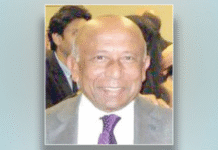December 29, 2019
YEAR END SPECIAL
How we combated violence against women in 2019

We are ending the year 2019 with the good news of being a top most gender equal country in South Asia—closing the overall gender gap by 48 percent in the World Economic Forum’s Global Gender Gap Index, 2018 with economic, education, health and political indicators and achieving various milestones. Nevertheless, in order to achieve Sustainable Development Goals (SDGs), we still have to overcome structural, local and global obstacles.
Bangladesh holds second position among Asian countries in the World Economic Forum’s gender gap index. Jumping 25 notches last year, Bangladesh retained second position among the most gender equal countries in Asia this year (December 18, 2019). Nevertheless, surprisingly enough, the lived reality of women regarding violence against women (VAW) or Gender-based violence (GVB) sharply contradicts with this great achievement.
The grim scenario
A schoolgirl in Dinajpur was gang raped when returning home after joining a Victory Day celebration programme at her own school on the night of December 16. Earlier, Nusrat Jahan, 18, had been murdered in April 2019—after being set on fire on the roof of a madrasa in Feni. She had refused to withdraw her complaint of attempted rape against the principal of the institution. Public outrage and mass protest prompted the prime minister to take a vow to bring her killers to justice. The principle, along with his 15 associates, had been sentenced to death in October. Ayesha Khanam, the director of Bangladesh Mahila Parishad said, “This verdict has set an example. It shows that with utmost sincerity we can ensure justice within our existing system.” The government instructed 27,000 educational institutions to form committees to prevent sexual assaults after this incident. Later, “Voice of Female Worker” reported that 26,752 dead bodies of women workers have arrived in Bangladesh from abroad in the last 10 years having faced mental and physical torture and sexual abuse. Three thousand dead bodies arrived only in the last nine months.
Bangladesh has, in fact, witnessed a dramatic and grim rise in sexual violence and rape in 2019 compared to that of the previous year. Multiple incidents of horrific sexual violence have raised a very grave concern for women and especially children’s safety and dignified life (Deutsche Welle, July 2019). Bangladesh Mahila Parishad reports (October 2019), the total number of cases of violence against women were 3,918 last year, but in the first six months of this year, it alarmingly came to 2,083. 217 women were assaulted in September, the highest in any single month since 2010. The number of rapes was as high as 5,000 in the last 10 months, as reported by human rights activist Sultana Kamal (November 2019). Bangladesh Mahila Parishad (BMP) estimated that 731 women and children were raped in the first six months of 2019. In comparison, 942 similar cases were recorded in the entire year of 2018.
Children have become increasingly vulnerable and have become highly susceptible to sexual brutality. In the first six months of this year, the number of children sexually abused and raped has doubled and reached the number for the whole year of 2018, reports the National Committee for International Rural Women’s Day Celebration (October 2019). In their finding, 75 percent of the children were abused by a close relative, neighbour and or acquaintance at home, in school, on the way to school, or in their familiar settings. Tamanna Rahman, a member of the committee, after collecting reports in national dailies, said that 572 children were sexually abused, including 75 boys during these six months, and that 23 children were killed after that. A report released by the Bangladesh Shishu Adhikar Forum (BSAF), a Dhaka-based child rights organisation, revealed that at least 496 children were raped in Bangladesh during the first six months of the year. The figure included 23 cases where children, after being raped, were murdered by the perpetrators and 53 incidents where they were subjected to gang rape. Rape and sexual abuse of young boys in madrasas and other places are relatively a new revelation for us. Some media has been hesitant to call it rape, using an alternative Bengali word balatkar to describe such crimes. Recently, an eight-year-old class three student in Faridpur died after being raped in a madrasa (December 25, 2019). Sexual abuse and rape of boys is yet to be included in our legal and policy conceptual frameworks. The abused children mostly come from underprivileged sections of society and are silenced for the sake of their family’s “honour”.

According to the National Girlchild Advocacy Research Forum, about 60 percent of adolescent girls experience sexual harassment in public spaces. All women respondents in this research thought that we need special laws for prosecuting sexual harassment offenders in public places. They surveyed 392 females between the ages of 12-35. 59.45 percent women experienced sexual harassment between the ages of 11-17 in public places, that includes physical contact. Young girls in Bangladesh are increasingly falling victim to online harassment and abuse. Bangladesh has one of the highest numbers of online users—63 million internet users—in South Asia. It records 10-12 online harassment complaints every day—90 percent of them are pre-teen and teenage girls, according to Nazmul Islam, Deputy Commissioner of Dhaka Metropolitan Police.
It is obvious that the actual number is way higher than those that are reported. Many more cases go unreported for fear of being blamed, stigmatised, ostracised or disowned by the family. Jinat Ara Haque, executive director of a women’s organisation “WE CAN”, said in a policy dialogue at the planning ministry in December that only 3 percent of incidents are reported. Women’s rights activists believe that the cause for this rise is the culture of impunity, fear and harassment through the legal process and its backlog.
Culture of impunity and rape culture
The Gender Based Violence data presented by Bangladesh Bureau of Statistics (BBS), BMP and other organisations indicate a sharp contrast and paradox of the policy implication expected.
They were perplexed to have found absolute incoherence between the above-mentioned statistics and the exhaustive and impressive legal reforms, services, budget allocation, as reported by Dr Saikh Imtiaz, a professor of women and gender studies, at the policy brief in the planning commission (December 23, 2019). It makes us rethink and re-evaluate the policy adopted for preventing Gender Based Violence and the government’s approach to basically tackle its aftermath. Many scholars, activists, and law professionals, including Sultana Kamal, Hamida Hossain and others, point to the normalisation of violence and culture of impunity for this sudden spike.
GBV against women occurs in the context of men’s social power and position, and as a result of structural violence, which entails processes, policies, and polities that systemically produce and reproduce social and economic inequities that determine who will be at risk of being assaulted and who will be shielded from them (Ainoon Naher, 2018). While the state has taken some legislative measures to protect girls and women from the worst forms of violence, it has not been able to dislodge the underlying causes of gender inequality, namely a deep-rooted patriarchal ideology that is pervasive in all spheres of life.
Women’s movement advanced in policy formulation and law reform
Gender platforms formed in 2017 consists of six national and international human rights and labour organisations, working to prevent all kinds of violence in workplace and educational institutes proposed “Sexual Harassment Prevention and Protection Law 2019” expanding on the High Court’s 2009 directive. The national conference on rape law reform last year, organised by BLAST (December 2018), has screened up the specific challenges in existing legal framework to deal with rape cases and set a milestone toward achieving justice for rape survivors. They have elaborately discussed the obstacles to access the legal system to punish criminals and explained elaborately why rape survivors opt for out-of-court settlements. Among the important issues are: introducing DNA testing and camera trial, abolition of the two-finger test, witness law section 155 (4), under the Evidence Act 1872, defining marital rape, redefining the existing definition of rape, financial constraints and settlement outside court and the power nexus between the police and the perpetrator. Loopholes of judicial measures still remains to be closed. Intervention has to be made where the process begins, where the ground for GBV has been laid, and generated.
The areas we have achieved significant progress in are: naming and shaming the perpetrator instead of the victim, organisational documentation of rape and sexual harassment, i.e., Ain o Salish Kendra’s record keeping, developing and framing law and judicial measures, i.e., the rape law reform national conference last year, provision of One Stop Crisis Centre and crisis hotline, bringing the question of compensation and reparation, continued activities for holding the government accountable, responsible reporting and changing and reshaping the way media covers rape incidents, and most importantly, people’s resistance and public protests against Gener Based Violence has become louder and stronger than ever.
The social value of viewing a rape victim as damaged, having lost their honour and being stigmatised by the community, still persists. Gender Based Violence as part of masculinity and passive victimhood as femininity holding the root cause of it, must be contested in all its manifestations. Women’s representation only as victims is problematic, especially when we plan and organise resistance against Gender Based Violence. Our only goals cannot be to simply get justice in rape trials, punish the Gender Based Violence perpetrators and ensure justice for the survivors. Our aim must be to ensure that all women get to live a fearless, dignified and thriving life. We must not be afraid to take action and actively resist each and every rape and GBV committed against any woman (including boys) of any class, caste, colour, creed, ethnicity and belief system and we must equip ourselves with science, law, literature and language to uproot the ideological underpinnings and moral support for rape forever. We must create a society free of fear from rape and all kinds of economic and sexual abuse. In order to do so, we need to courageously set our action plan forward to eradicate all forms of GBV, not merely curb or control or avoid it on an individual basis.
Sayema Khatun is Associate Professor, Department of Anthropology, Jahangirnagar University.
Email: sayemakhatun@juniv.edu









